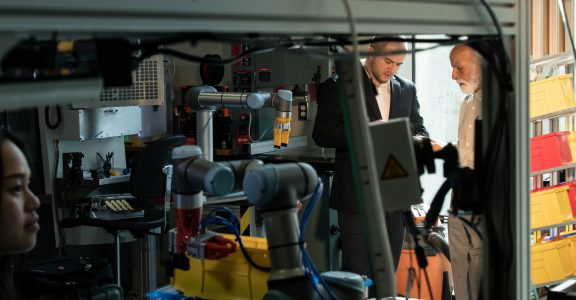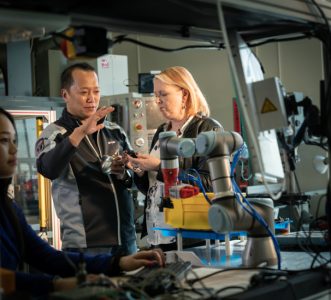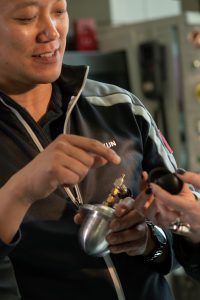“Do you want to build a satellite?”

May 15, 2018
Exploration has always been risky. And while modern space explorers don’t have to worry about plagues of scurvy or dysentery, they do face a host of other potential health problems – including exposure to potentially dangerous levels of different types of radiation. And where the symptoms of scurvy and dysentery are obvious (and unpleasant), radiation exposure can be sneaky – it often isn’t evident until years later, when someone who has been exposed develops cancer or cataracts.
With humans starting to extend their space exploration beyond a low earth orbit – where the International Space Station is located – radiation detection systems that can classify and characterize radiation hazards are more necessary than ever.
And that’s why a satellite the size of a loaf of bread and developed by a team of McMaster researchers is now one of 15 projects chosen by the Canadian Space Agency to be launched into space as part of the Canadian CubeSat Project.

The satellite, named NEUDOSE — “NEU” for neutrons, “DOS” for dosimetry (the measurement of radiation dose) and “E” for exploration – is the first device that to measure the amount of neutron and charged particle radiation an astronaut receives during a spacewalk. Neutrons, which are produced when galactic cosmic rays interact with the earth’s upper atmosphere, make up about 50 per cent of the radiation dose that humans receive in space. It’s important to track an astronaut’s exposure to neutrons, because they can have serious effects on a body’s DNA – but that hasn’t always been possible.
“Conventionally, the instruments that were required to measure neutrons in space were very heavy – up to 50 kilograms, and using 600 watts of power,” explains Andrei Hanu, now a senior scientist with Bruce Power and a graduate of McMaster’s Radiation Sciences program. “You can’t use those instruments for personal dosimetry. So we wanted to develop something that would solve that problem.”

NEUDOSE, which is expected to be deployed from the International Space Station in 2021, will beam data from the International Space Station back to McMaster, where it will be collected and analyzed, helping researchers on the ground understand how long-term exposure to charged and neutral particles affects the human body.
The CSA’s recent announcement is the latest development for a project that has been years in the making – one that started with Hanu, during a 2014 fellowship at NASA’s Goddard Space Flight Centre.
Hanu was working on developing an instrument to measure radiation exposure in astronauts and reached out to two people he knew could help him: Fiona McNeill, the director of McMaster’s Radiation Sciences graduate program, and Soo Hyun Byun, a professor of physics and astronomy.

“After I’d spent a few months in my office designing an instrument, I reached out to Fiona McNeill and Dr. Byun. The subject line in the email was, ‘Do you want to help me build a satellite?’” Hanu recalls. “It was probably three hours before I had the nerve to hit send.”
Hanu needn’t have worried.
The project’s information meeting attracted almost 100 students across a range of disciplines, from engineering to life sciences to science. Since then, roughly 40 undergraduate and graduate students have worked on the project.
A group of students was even able to test the satellite through NASA’s High Altitude Student Platform (HASP) program in 2017, flying the satellite’s radiation detector 100,000 feet above the earth in a high-altitude balloon above the Columbia Scientific Balloon Facility in Palestine, Texas. Another group will return this year to perform further tests.
Among other projects, student groups have also been working on control systems, the satellite’s software and building the ground station that will collect the satellite’s data.
“What many people don’t realize about this project is that it’s completely student-driven: students are designing, fabricating and testing the satellite structure as well as all of its supporting structure,” says Erica Dao, NEUDOSE’s project manager and a Radiation Sciences PhD student working on breast cancer detection. “No one at McMaster is really doing something like this, so we’re all able to take our expertise from our studies at McMaster and apply it to a different field in a brand-new way.”


